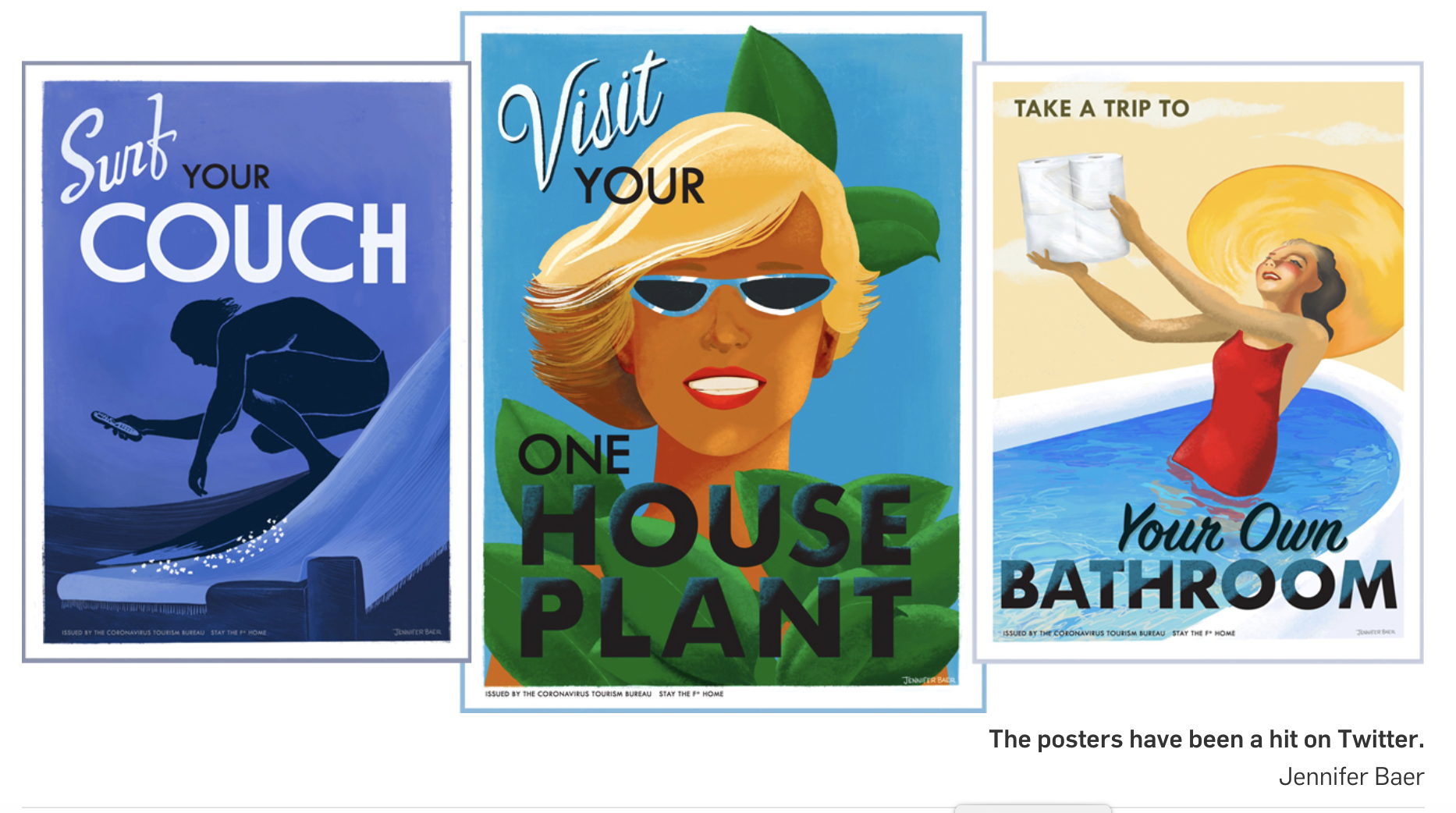
Brand Storytelling In The Times Of Corona
Brand Storytelling In The Times Of Corona https://www.visualstorytell.com/wp-content/uploads/2020/04/brand_storytelling_coronavirus_thumb.jpg 366 222 Shlomi Ron Shlomi Ron https://secure.gravatar.com/avatar/995c0cf093380b90c7704fda398c9addf4e5c605afbc92af5c3f01f67d65aa41?s=96&d=mm&r=g- Shlomi Ron
- no comments
How are you keeping in physical shape these days?
My wife and I used to take a walk around 7 PM every day. In Miami, with its eternal summer weather, it’s the best time to do it as it’s not too hot and there is still mild light out.
Soon enough, we realized a lot of people have reached the same conclusion. Our neighborhood’s streets became crowded with a lively parade of hikers, runners, bikers, dog walkers, and even occasional roller skaters.
How are you supposed to keep the recommended 6 feet distance, right?
Frustrated, but determined to keep our daily walking routine, we switched to 6:30 AM. Yep, it’s way too early but very quiet. We might see a lone hiker or a neighbor picking up their paper from the driveway, but that’s it.
This social distancing that in a course of a couple of weeks emptied streets all over the world, has created an eerily visual language we typically see in apocalyptic films.
The New York Times has recently captured this peculiar visual storytelling in a series of photos from around the world, called The Great Empty.
The protagonist in all these photos, as you can expect, is the striking emptiness that dominates familiar public places that until recently were packed with people. This mental conflict between the familiar past story and the alienated present one – is quite gripping.
Signature scene
It also reminded me of the first episode in the Twilight Zone TV series aired on October 2, 1959 – Where Is Everybody? Check it out on Netflix as it nicely captures this emotional emptiness in Rod Serlin’s first well-crafted narrative.
This black & white TV series is known for using stories with unexplained phenomenons to shed light on human behavior that triggers larger philosophical questions.

Another clever visual storytelling I liked, is by designer Jennifer Baer who created a series of vintage travel posters that are reimagined for social distancing. This past-to-present interplay is fantastic and was a hit on Twitter.
Interestingly, if our society was more divided before the Corona pandemic broke out, social distancing has now ignited our need for human connection.
We see more acts of generosity, my mom just reported how neighbors offered to bring groceries, hosting virtual cocktail parties or 50-people Zoom family reunions. Not to mention, people you lost touch with are now checking in with you.
Another opposite I find interesting is the fact that not too long ago I wrote about the growing trend of Digital Fatigue, Tech Detox, screen time limits, with fervent advocacy to meet people IRL (In Real Life).
Now, the stay-at-home order under the new normal has redefined our relationship with screens and transformed them into our primary social and work lifelines.
The screens won.
In this confusing new reality, we also see brands struggling with how to communicate with audiences. These are unusual times that call for different storytelling approaches because we’re in the midst of a rolling story with high stakes and an unclear timeline for resolution.
Brands need to manage a delicate balance between being sensitive to people’s more basic safety and psychological needs than business as usual messaging.
What stories brands should tell these days?
 Reserve your FREE ticket today
Reserve your FREE ticket today
Great question!
That’s why I decided to hold a 1-hour Webinar to cover this exact topic: Brand Storytelling In The Times Of Corona, including covering the topic in upcoming episodes of the Visual Storytelling Today podcast.
Since the first announcement in March, businesses from all industries have changed their storyline, from product to empathy and solidarity, while others miss the mark.
Join me and Diana Yazidjian, a storytelling expert at DFY Consulting, as we’ll discuss what makes a great story in these troubling times with clear cut examples from major brands across the world.
What you’ll learn:
– Notable industry examples of flops vs. champions
– Storytelling triggers that brands should cultivate
– Common misconceptions and how to avoid them
– Brand storytelling strategy in the short, mid (summer) and long-term post-corona
– Actionable tips you could apply to tell your brand story in the near future
This webinar is ideal for brand managers, CMOs, small business owners and those who want to learn how to effectively navigate this crisis to better connect with customers and continue building your brand for long-term growth. The webinar includes an open discussion with active Q&A.
Register and share with anyone who may benefit.
Need help adapting your brand storytelling strategy during these uncertain times? Email shlomi_at_visualstorytell_dot_com or all 305-985-3450 and we’ll talk.
Shlomi Ron
Shlomi Ron is the founder and CEO of the Visual Storytelling Institute, a Miami-based think tank with a mission to bring the gospel of visual storytelling from the world of art to more human-centric and purpose-driven marketing. A digital marketing veteran with over 20 years of experience working both on the agency and brand sides for Fortune 100/500 brands such as Nokia, IBM, and American Express. He started VSI to combine his marketing expertise with his passion for visual stories stemming from his interests in classic Italian cinema and managing the estate of video art pioneer, Buky Schwartz. At VSI, he helps brands rise above the communication noise through visual storytelling consulting, training, and thought leadership. Select clients include Estée Lauder, Microsoft, and Cable & Wireless – to name a few. He currently teaches Brand Storytelling at the University of Miami’s Business School. Thought leader and speaker at key marketing conferences. He is also the host of the Visual Storytelling Today podcast, which ranks in the top 10 best business storytelling podcasts on the Web. His book: Total Acuity: Tales with Marketing Morals to Help You Create Richer Visual Brand Stories. Outside work, he is a nascent bread baker, The Moth fan, and longtime fedora wearer likely to jive with his classic Italian cinema interest.
All stories by: Shlomi RonYou might also like
This site uses Akismet to reduce spam. Learn how your comment data is processed.





Leave a Reply